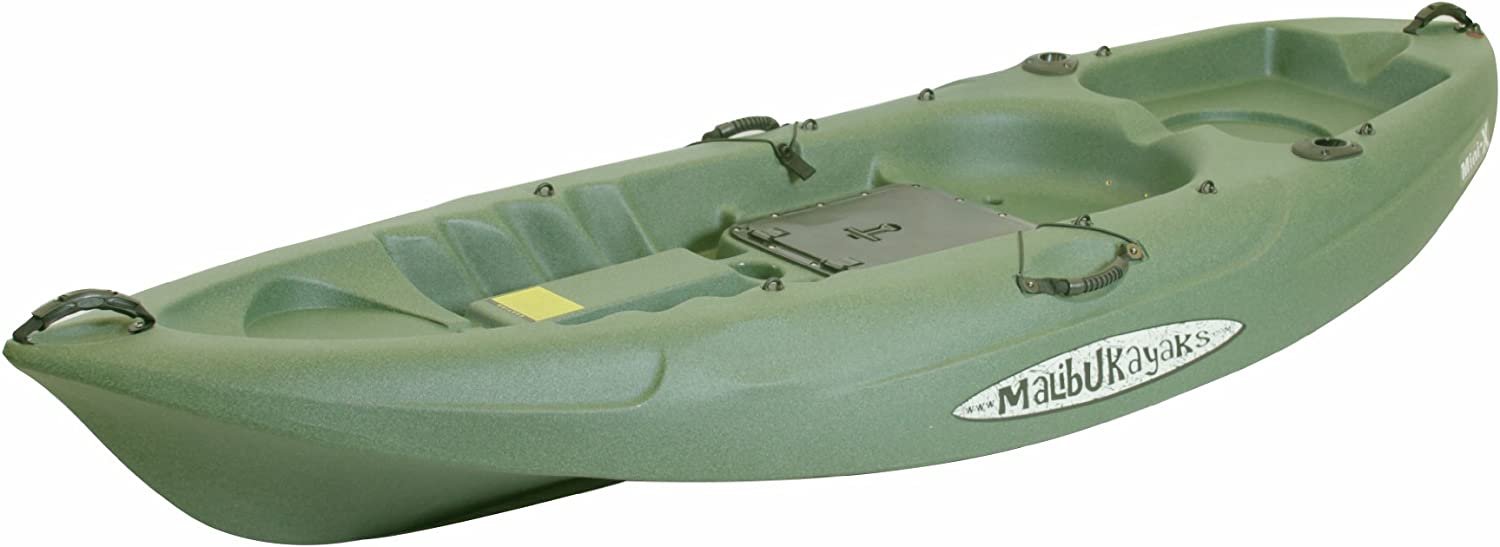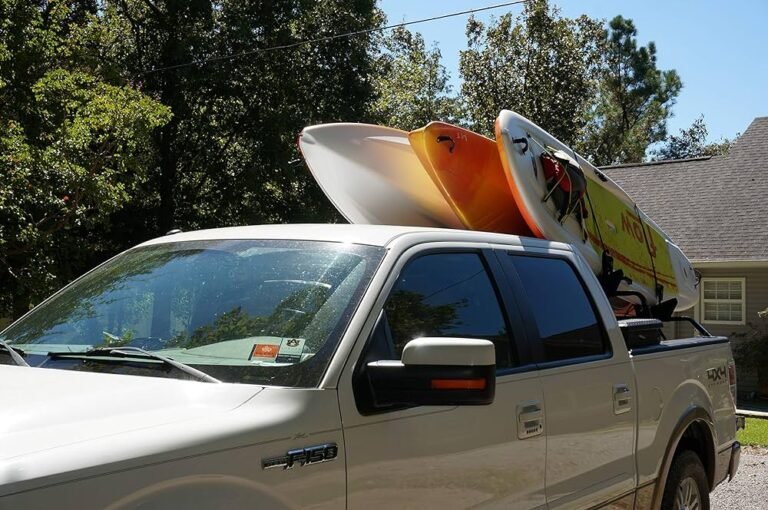How To Detect Leaks In Your Kayak

When it comes to kayaking, your safety should always be your top priority. A crucial aspect of safety kayakers often overlook is the detection of leaks in their kayaks. A leak in your kayak doesn’t only affect your safety, it also affects the buoyancy and longevity of your kayak.
Dangers of Kayaking In A Leaking Kayak
- Sinking And Difficulty In Paddling: A slow leak can turn into a rapid one when subjected to the stresses of kayaking, potentially causing your kayak to sink. If your kayak has a leak, continuous paddling will cause it to become water-logged, making it more difficult to paddle with each stroke.
- Hypothermia: In cold water conditions, if water enters the kayak, it can lead to hypothermia, especially in colder conditions.
- Difficulty In Rescue: In case of an emergency, a leaky kayak can make it more challenging for rescuers to provide assistance to you.
How To Detect Leaks In Your Kayak
Necessary Resources
- Soapy Water Solution: Prepare a soapy water solution in a spray bottle. This solution will be used to create bubbles that reveal escaping air from leaks.
- Sponge or Cloth: Keep a sponge or cloth handy to wipe away excess soapy water and keep your workspace clean.
- Kayak Stand or Sawhorses: To facilitate a thorough inspection, place your kayak on a stable kayak stand or sawhorse. This allows you to access the entire surface of the kayak.
- Inspection Mirror: An inspection mirror with an extendable handle will help you see hidden areas of your kayak, such as the inside of hatches or under deck rigging.
- Marker or Tape: You’ll need a marker or tape to mark the locations of detected leaks for later repair. This ensures you don’t lose track of them.
- Flashlight: A powerful flashlight is essential for illuminating dark and tight spaces inside your kayak, making it easier to spot potential leaks.
Leak Detection Process
1. Visual Inspection
The first step in detecting leaks in your kayak involves a thorough visual inspection. This phase involves examining both the external and internal parts of your kayak to identify any visible signs of damage or potential leaks.
Deck Inspection
Inspect the seams where the deck (the top) of your kayak meets the hull. Look for any separation, cracks, or signs of wear and tear along these seams.
Carefully examine all hatches and bulkheads on your kayak. These areas are susceptible to leaks. Ensure that the seals are intact and there are no visible cracks or gaps.
Hull Inspection
Begin by carefully inspecting the hull (the bottom) of your kayak. Pay close attention to the entire surface, looking for irregularities, scratches, or dents.
Run your hands over the hull to feel for any imperfections. Check for visible damage, such as deep scratches, gouges, or areas where the plastic or fiberglass appears compromised.
Bulkheads and Cockpit Area Inspection
Once inside the kayak, closely inspect the bulkheads (the partitions that divide the kayak) and the cockpit area. Look for any cracks, holes, or visible damage in these critical areas.
Pay attention to the outfitting and seat areas, including footrests and braces. Ensure that these components are securely fastened and that there are no signs of wear or damage that could potentially lead to leaks.
Accessing the Inside of the Kayak
To inspect the interior of your kayak, you may need to remove any gear, seats, or outfitting that obstructs your view. Access the inside through hatches or openings as needed.
During the visual inspection, take your time to thoroughly examine every part of your kayak. Even small cracks or imperfections can develop into significant leaks when subjected to water pressure.
If you discover any visible damage or suspect leaks during this process, mark their locations with tape or a marker for further evaluation and potential repairs. Once you’ve completed the visual inspection, you can move on to other testing methods to confirm the presence of leaks.
2. The Water Test
The water test is a critical step in detecting leaks in your kayak. Water testing involves introducing water to your kayak to check for leaks.
This method is highly effective in identifying even the smallest leaks that might not be apparent during a visual inspection. The goal is to replicate the conditions your kayak experiences while paddling to detect leaks under pressure.
Types of Water Tests
There are two primary types of water tests you can perform on your kayak:
The Submersion Test
Place your kayak in a body of water (like a pool or a calm lake) and carefully lower it in until it is completely submerged. Allow the kayak to sit in the water for a specified duration, usually 15-30 minutes. After the allotted time, inspect the interior of the kayak for any signs of water intrusion.
If you notice water inside the kayak, mark the location of the leaks. The presence of water confirms that your kayak has a leak that needs to be addressed.
The Fill and Soak Test
Place your kayak on a stable surface, ensuring it is level. Fill the kayak with water, starting from the cockpit and continuing until it’s filled to the brim.
Allow the kayak to sit for a specific period, often 15-30 minutes. Check the interior for any signs of water leakage. If you observe water inside the kayak, mark the location of the leaks. The presence of water confirms the presence of leaks that require attention.
How To Repair Minor Kayak Leaks
- Locate the source of the leak: Before repairing any leaks, thoroughly locate the source of the leak. Ensure the area around the leak is clean and dry.
- Patch the leaks: For pinhole-sized leaks, you can often use specialized kayak repair tape or patches. Clean the area around the hole, apply the patch, and press it firmly to create a watertight seal.
How To Repair Moderate To Severe Kayak Leaks
- Epoxy Repairs: For moderate-sized leaks or cracks, epoxy can be an effective solution. Sand the area around the leak, apply epoxy resin and hardener, and reinforce it with fiberglass cloth if necessary. Follow the manufacturer’s instructions for the epoxy product of choice.
- Fiberglass Repairs: Severe leaks, tears, or significant damage may require more extensive fiberglass repairs. This involves layering fiberglass cloth with epoxy resin over the damaged area. These repairs can be complex and may benefit from professional assistance if you’re not experienced in fiberglass work.
Kayak Leak Preventative Maintenance
- Perform regular visual inspections of your kayak, even when you’re not actively looking for leaks. Catching issues early can prevent them from becoming major problems.
- UV rays can damage the surface of your kayak over time. Use UV protection products like kayak covers or UV-resistant sprays to shield your kayak when it’s not in use.
- Store your kayak in a cool, dry place away from direct sunlight. If storing it outdoors, use a kayak cover to shield it from the elements.
- Take care when loading and transporting your kayak to avoid bumps and impacts that could lead to damage or leaks. Use proper kayak racks and secure straps.
When to Seek Professional Help For Your Kayak Repairs
While many kayak repairs and maintenance tasks can be performed by experienced paddlers, there are situations where seeking professional assistance is the best course of action.
- Major Structural Damage: If your kayak has suffered significant structural damage, such as extensive cracks, large holes, or severe deformation, it’s best to consult a professional/the manufacturer. Attempting complex repairs on your own may worsen the situation.
- Advanced Welding and Plastic Repairs: For kayaks made of plastic, welding or plastic repairs may be required. These specialized techniques are best left to the professionals since they possess the needed equipment and expertise.
- Complex Fiberglass Work: Fiberglass repairs, especially those involving multiple layers and intricate shapes, can be challenging for inexperienced individuals. Professionals have the expertise to handle such repairs effectively.
- Manufacturer Warranty: If your kayak is still under warranty, attempting DIY repairs may void the warranty. Consult the manufacturer or an authorized dealer for warranty-related repairs.
Regular inspections of your kayak cannot be overstated. They are the first line of defense in preventing leaks and ensuring your safety on the water. By conducting routine visual inspections and addressing issues promptly, you can catch potential problems before they become major concerns.






